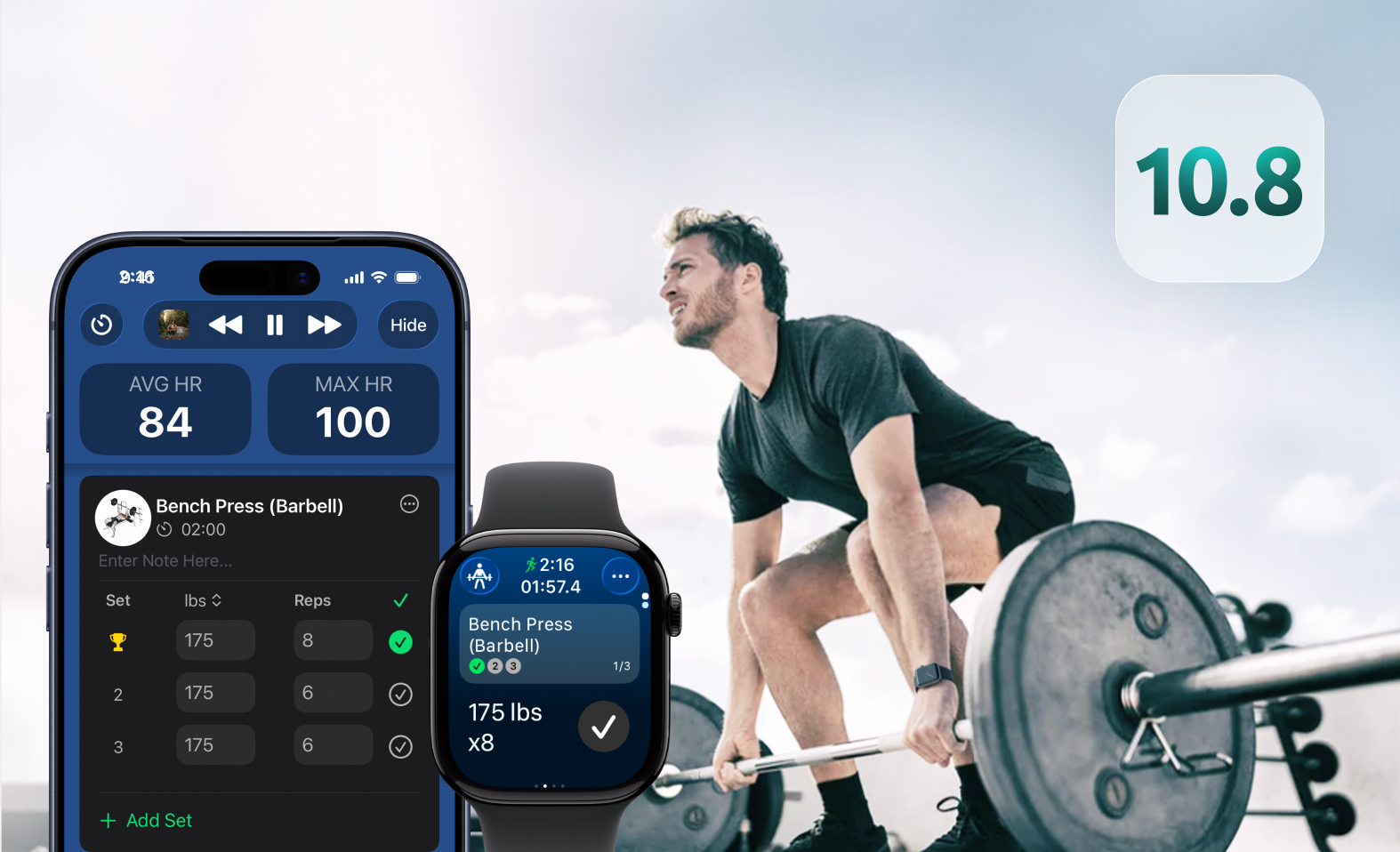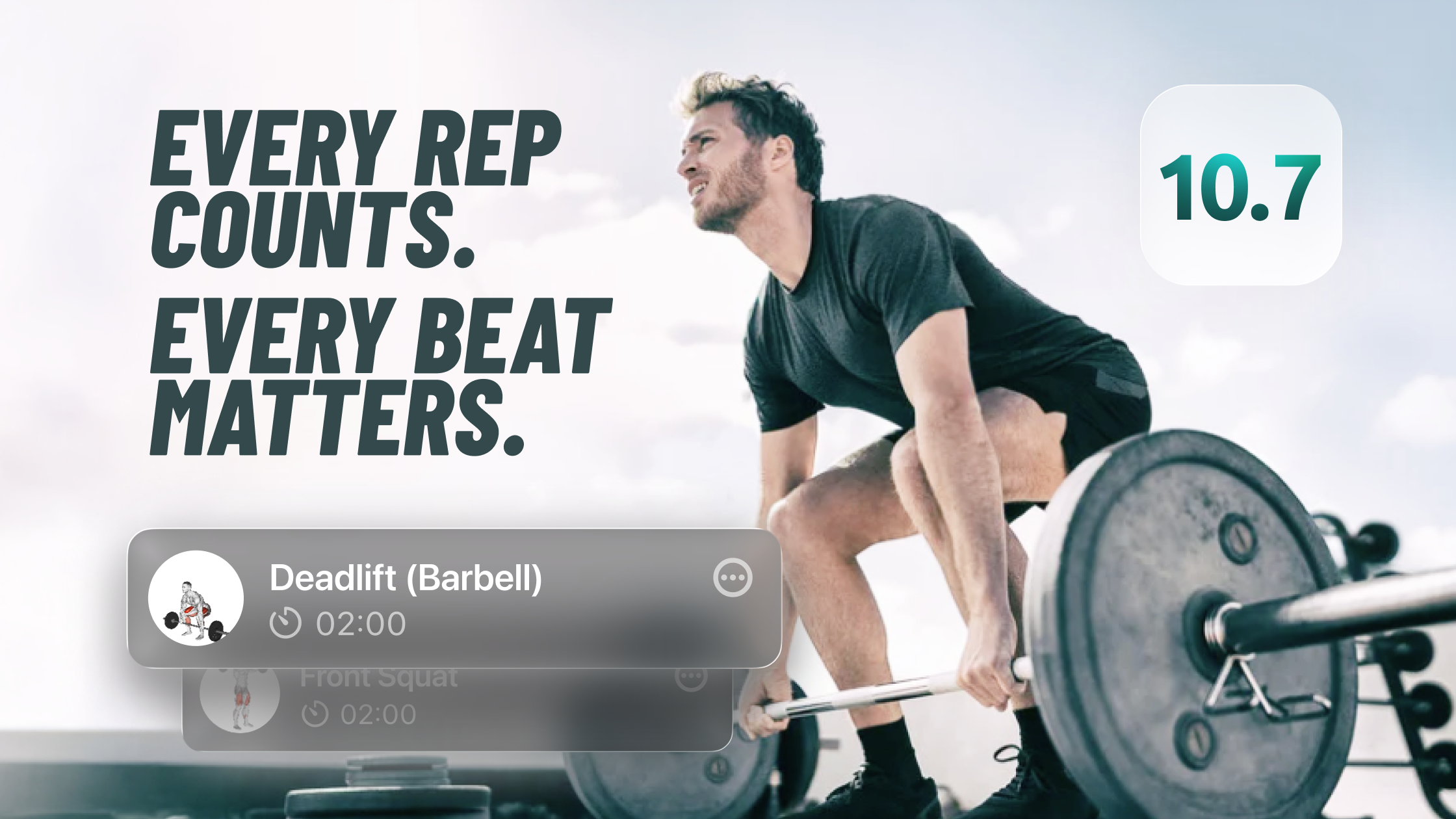Heart Rate Data and Overtraining: Maximizing Your Performance with Science!

Overtraining can seem like the Boogeyman of the fitness industry. Work hard! Train hard! But ... not too hard, or overtraining will get you. Thats not particularly helpful advice, is it? How do you know how much is too much?
Nobody wants to take an unnecessary rest day, but we all know that improving your fitness requires rest. Rest is how your body repairs and progresses. If you train constantly without taking appropriate rest time you'll be stressing your body. Some stress is good, but constant stress is not. Constant stress can lead to injury, illness, and impair your progress. So, how do you know it's time to rest? Well, here comes science to the rescue!
Heart Rate Data
If you aren't already recording your heart rate data during your workout it's time to start! Heart rate training is the fitness industry's best tool for analyzing your data and monitoring your performance over time. With a Bluetooth heart rate monitor, smart watch or Apple Watch and a great workout app (like FITIV Pulse) recording your hart rate data is seamless and simple and will add a lot of value to your workouts. heart rate data can tell you if you're working hard enough, but did you know it can help you prevent overtraining too?
If you're looking for a super simple way to see your progress and monitor overtraining the Apple Watch is definitely your best bet. The Apple Watch (Series 3 and above) monitors not only your workout heart rate but also two key recovery metrics: RHR and HRV. RHR (resting heart rate) and HRV (heart rate variability) are incredibly useful heart rate metrics. They can show you getting fitter, and will be the easiest way to see if you need a rest day.
Resting Heart Rate

Resting heart rate refers to the frequency of your heart beats when you're completely at rest. This is your heart's baseline. Resting heart rate can tell you a lot about your health and fitness. Values between 60 and 100 are considered normal, but trained athletes can have resting heart rates even lower than that. Higher resting heart rates can be a sign of disease, so it's important to see a doctor if you have any concerns about your heart health.
Resting heart rate, in general, decreases when you train and become more fit. That is one way you can really see measurable health improvements. Measuring your resting heart rate -- whether by using an Apple Watch to automatically track it or by manually counting out your pulse daily -- gives you a fitness edge. So, we know that measuring your resting heart rate can help you see improvements in your overall fitness, but how can it prevent overtraining?
Resting heart rates have been one of our main ways of measuring Overtraining Syndrome for decades. Studies have shown that when athletes overtrain they see increases in their resting heart rates. Because you can generally expect your resting heart rates to decrease when you work out, if you see an increase in your resting heart rate is can be a bad sign.
A 1992 study found that an increase in resting heart rate is one of the primary predictors of overtraining. The study concluded that a resting heart rate increase of 5 BPM or more is a strong sign of overtraining. This, in tandem with other signs of overtraining, would be a good predictor if you have the data available.
A 1985 study indicated that overtrained runners saw an average increase in resting heart rate of 10 BPM! That's a pretty noticeable change, which could be a super simple way to evaluate your overtraining. Because resting heart rate is such a simple metric to measure it can easily be your first line of defence. See a spike in your resting heart rate? Take a rest day.
Heart Rate Variability
Heart rate variability is a slightly more precise tool for seeing your fitness progress and general heart health. HRV refers to how 'flexible' your heart rate is in response to what you're doing. If you have low heart rate variability that means that your heart rate stays consistent if your activity changes. When, for example, you're walking your heart rate may stay at a consistent 90 BMP with very little variation even when your speed changes. Higher heart rate variability means that your heart rate can fluctuate between, for example, like 80 BPM and 100 BPM in frequency. This kind of flexibility means your heart is healthy and dynamic. The more you exercise the stronger your heart becomes. A stronger heart is better able to deal with changes in your activity, changes in stress level, and changes in general.
Heart rate variability can be a difficult metric to track, but is easily and automatically tracked with the Apple Watch. This is one of the reasons that the Apple watch is an amazing tool for athletes. Once you've started tracking your baseline of heart rate variability you can track important changes. With HRV you're looking for an increase over time. If your workout routine is working your HRV will go up over time. Because you want, and can reasonably expect to see, an increase in your HRV while working out you can check for unexpected decreases in this value.
A 2014 study showed a very strong correlation between HRV changes and stress in athletes. HRV is being touted as the new RHR when it comes to monitoring stress and recovery. The study's results stated: "Several studies have used HRV analysis for short-term load control (22,23). They reduced the training loads when HRV decreased, and increased the load when HRV remained stable or increased. Plews et al. (35) used the tendency of the absolute values of the HRV and daily variations to control the training process of high-standard triathletes."
This study, and more like it, indicate that even small drops in HRV can be immediate and actionable clues of overtraining. Using HRV drops as the trigger for a rest day has been extremely successful in improving athlete performance.
Why monitor both?
The human body is a complex system. We may want to monitor every spect of our bodies to get a complete picture of our health and fitness, but the fact is that it's impossible to consider every single variable that affects our bodies. Changes in any specific metric can be caused by a myriad of things. Did you get a bad night's sleep? Are you fighting off a cold? Did you eat something that doesn't agree with you? Each of those factors can affect your metrics.
When you're tracking multiple metrics you can get confirmation that your conclusions are on the right track. Is your resting heart rate going down? Is your heart rate variability going up at the same time? It sounds like your routine is working! Your heart is getting fitter and healthier. You can keep your routine going.
On the other hand, if your resting heart rate suddenly shoots up and your heart rate variability goes down this is a huge clue that you might be overtraining. Look at your recent workouts, have you taken a rest day lately? If not, it sounds like it's definitely time to take one.
How can I track those values?
At FITIV we strongly recommend the Apple Watch for athletes who are looking to track more than just their workouts. Features like automatic resting heart rate and heart rate variability tracking are a huge game-changer. It's simple to get the data you need, and FITIV Pulse has the tools you need to interpret that data.
Add HRV and RHR to your FITIV Dashboard to give you the option of monitoring those values over time.
If you're serious about your training it's time to get started with FITIV Pulse: the best way to unlock your fitness potential.






.png)




